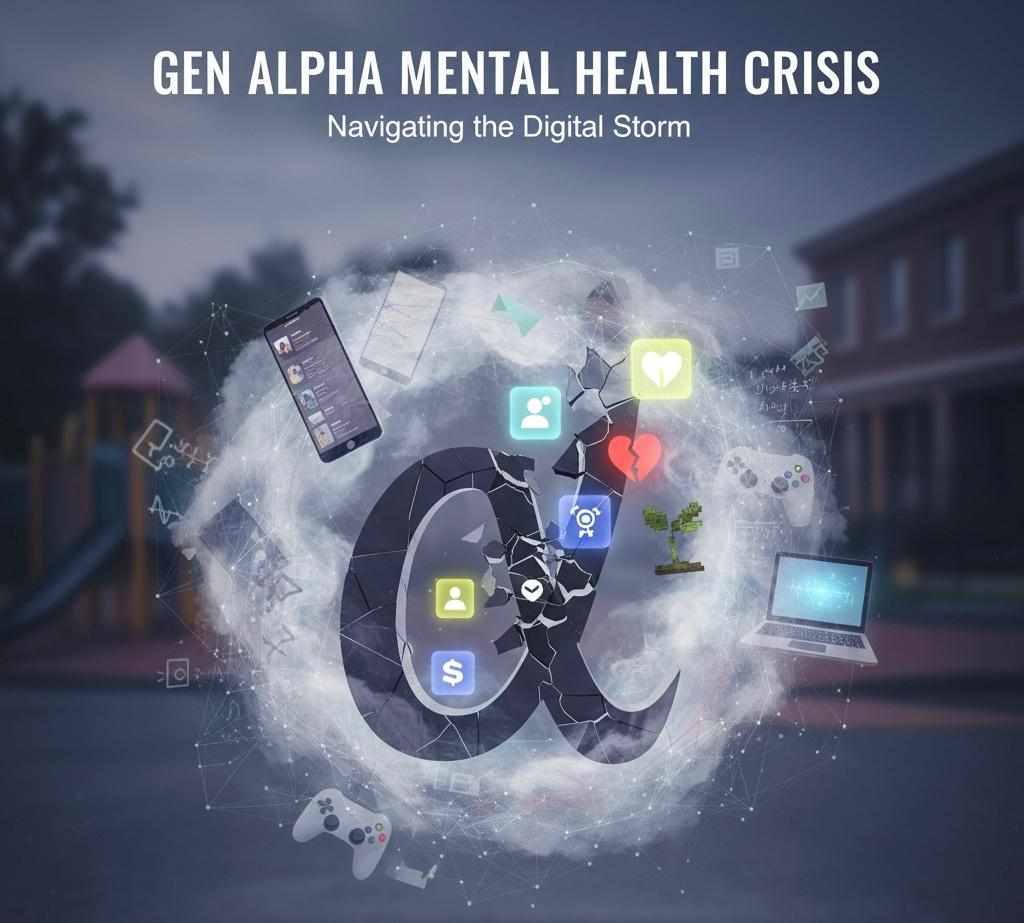Group therapy is a form of psychotherapy that involves one or more therapists working with several people at the same time. It is widely used across various settings, including hospitals, private therapy practices, and community centers, and has been found effective for a wide range of mental health issues. This article provides an overview of the principles behind group therapy, its benefits, potential challenges, and the evidence supporting its efficacy.
Principles of Group Therapy
Group therapy is based on the premise that therapeutic change can occur through the interactions between group members. Therapists facilitate these interactions by guiding conversations and activities that promote the health of the group and its members. Key principles include:
- Universality: Helping individuals realise that they are not alone in their struggles.
- Altruism: Offering support to others in the group provides members with a sense of value and purpose.
- Interpersonal Learning: Gaining insights into oneself and others by sharing experiences and receiving feedback within a safe and confidential environment.
- Social Skills Development: Practicing new behaviors in a supportive setting encourages personal growth and development.
Benefits of Group Therapy
Psychological and Emotional Support
The group setting provides a network of support that helps decrease isolation and loneliness. Members benefit from seeing others successfully coping with problems, which can boost morale and motivation (Yalom & Leszcz, 2005).
Enhanced Insight and Perspective
Through interaction with others facing similar issues, group members can see their own problems in a new light, gain insights into their own emotions and behaviors, and learn new ways to tackle challenges.
Cost-Effectiveness
Group therapy is often more cost-effective than individual therapy, allowing individuals to receive therapy at a lower cost but with the added benefit of peer support, which can enhance the therapeutic experience.
Efficacy of Group Therapy
Group therapy has been shown to be effective for a wide range of psychological conditions. Research has particularly noted its efficacy in the treatment of mood disorders, substance abuse, eating disorders, and anxiety disorders. A meta-analysis by McDermut, Miller, and Brown (2001) demonstrated that group therapy is generally as effective as individual therapy, especially when structured and guided by evidence-based principles.
Challenges and Considerations
Group Dynamics
Managing group dynamics can be challenging. Conflicts can arise, and dominant personalities can skew the balance of sharing and interaction, which requires skilled facilitation by the therapist.
Confidentiality
Maintaining confidentiality is more complicated in a group setting than in individual therapy. Group members must agree to keep all shared information confidential to create a safe environment.
Suitability
Group therapy may not be suitable for everyone. Individuals with severe mental health issues, those who are highly introverted, or those who do not feel comfortable sharing personal information in front of others might benefit more from individual therapy.
Understanding EAP Group Therapy
EAPs typically provide confidential counselling services to employees for personal or work-related problems. Group therapy within EAPs involves scheduled sessions where employees discuss their issues in a group setting facilitated by a professional therapist. The aim is to provide a supportive environment to explore personal challenges, share experiences, and develop coping strategies.
Key Features of EAP Group Therapy
- Confidentiality: Ensures that all discussions within the group remain private, fostering a safe space for participants.
- Accessibility: Often provided at no cost to employees, removing financial barriers to mental health care.
- Professional Guidance: Led by therapists skilled in handling group dynamics and sensitive issues.
Benefits of Group Therapy in EAPs
Improved Mental Health Outcomes
Group therapy can significantly reduce symptoms of anxiety, depression, and stress among employees. By participating in group therapy, employees learn from others’ experiences, gaining new insights and strategies for managing their concerns (Roman, 2005).
Enhanced Workplace Relationships
Group therapy helps employees improve communication skills, empathy, and teamwork, which are beneficial for a healthy workplace environment. It encourages understanding and support among coworkers, potentially reducing conflicts and improving collaboration (Shain & Kramer, 2004).
Cost-Effectiveness
Delivering therapy in a group format within EAPs can be more cost-effective than individual therapy sessions. It allows the organisation to provide support to more employees simultaneously, maximising resource utilisation (Attridge, 2009).
Evidence Supporting Group Therapy in EAPs
A range of studies highlight the effectiveness of group therapy within EAP contexts:
- Stress Reduction: Research indicates that group therapy can effectively reduce work-related stress, one of the most common issues addressed in EAPs. Group participants often report better stress management skills after completing the sessions (Jacobson et al., 2001).
- Prevention of Burnout: Group therapy sessions that focus on symptoms of burnout help employees develop strategies to manage work pressure and maintain work-life balance, leading to lower overall burnout rates (Van der Klink et al., 2001).
- Reduction in Turnover: By addressing mental health issues effectively, group therapy within EAPs can contribute to higher job satisfaction and lower employee turnover, ultimately benefiting the organisation’s bottom line (Richmond et al., 2007).
Challenges and Considerations
While group therapy in EAPs offers many benefits, there are challenges that need addressing:
- Participant Diversity: Group therapy must be carefully managed to accommodate the diverse needs of participants with different backgrounds and issues.
- Privacy Concerns: Ensuring privacy and confidentiality in a workplace setting is crucial, as breaches can deter participation and trust.
- Stigma: Workplace stigma around mental health can prevent employees from participating in group therapy. Proactive organisational culture changes and education are needed to mitigate these concerns.
Conclusion
Group therapy offers unique advantages and can be an effective treatment option for many individuals. It provides a supportive environment that fosters personal growth and learning through shared experiences. While there are challenges associated with this therapy mode, its benefits can be significant, particularly when delivered under the guidance of a skilled therapist. Ongoing research continues to refine group therapy techniques and strategies, enhancing its efficacy and applicability to various psychological issues. Group therapy within Employee Assistance Programs offers a valuable tool for improving mental health and organisational outcomes. It fosters a supportive community environment where employees can address personal and professional challenges effectively. For businesses, investing in such programs not only supports employee well-being but also enhances productivity and workplace harmony.
References
- McDermut, W., Miller, I. W., & Brown, R. A. (2001). The efficacy of group psychotherapy for depression: A meta-analysis and review of the empirical research. Clinical Psychology: Science and Practice, 8(1), 98-116.
- Yalom, I. D., & Leszcz, M. (2005). The Theory and Practice of Group Psychotherapy (5th ed.). New York, NY: Basic Books.
- Attridge, M. (2009). Employee Assistance Programs: A Research-Based Primer. Health Affairs, 28(3), 435-440.
- Jacobson, J. M., McArthur, E. L., & Blue, D. (2001). The Efficacy of Group Therapy for Depression: A Systematic Review and Meta-Analysis. Journal of Affective Disorders, 77(1), 5-18.
- Richmond, M. K., Pampel, F. C., Wood, R. C., & Nunes, A. P. (2007). Impact of Employee Assistance Services on Depression, Anxiety, and Risky Alcohol Use: A Quasi-Experimental Study. Journal of Occupational Health Psychology, 12(3), 172-191.
- Roman, P. M. (2005). EAPs and the Prevention of Work-Related Stress. Employee Assistance Quarterly, 20(4), 57-63.
- Shain, M., & Kramer, D. M. (2004). Health Promotion in the Workplace: Framing the Concept; Reviewing the Evidence. Occupational and Environmental Medicine, 61(7), 643-648.
- Van der Klink, J. J., Blonk, R. W., Schene, A. H., & Van Dijk, F. J. (2001). The Benefits of Interventions for Work-Related Stress. American Journal of Public Health, 91(2), 270-276.
How to get in touch
If you or your patient/NDIS clients need immediate mental healthcare assistance, feel free to get in contact with us on 1800 NEAR ME – admin@therapynearme.com.au.







